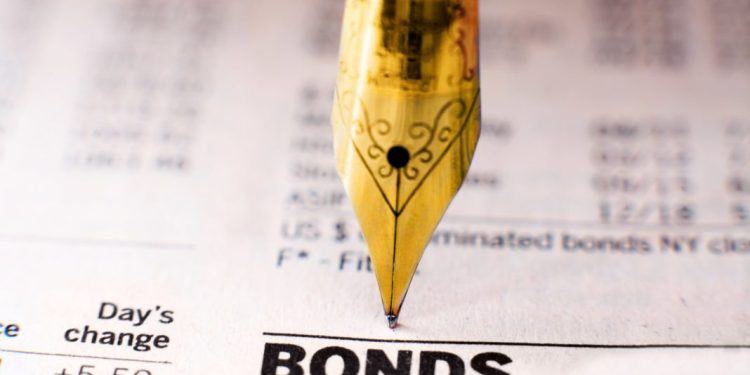
Infrastructure bonds have become one of Kenya’s most rewarding investment opportunities. These government-issued securities offer a unique blend of high returns, tax exemptions, and low risk. The recent sale of an infrastructure bond, which yielded over 21% in gains, has reaffirmed the strong potential of this asset class.
What Are Infrastructure Bonds?
Infrastructure bonds are debt instruments issued by governments to raise funds for critical infrastructure projects like roads, bridges, energy plants, and water systems. In Kenya, these bonds are typically floated by the Central Bank of Kenya (CBK) on behalf of the government.
Here’s why these bonds are so appealing:
- Tax-Free Interest: Investors don’t pay taxes on the interest earned, which significantly boosts net returns.
- Fixed Income: Bonds provide regular, predictable coupon payments, making them ideal for investors seeking steady cash flow.
- Government Backing: These bonds are considered safe since they are backed by the Kenyan government.
- Long-Term Investment: Infrastructure bonds often have long tenures (5–20 years), which suit individuals looking for sustainable growth.
Breaking Down the Recent Bond Sale
The latest infrastructure bond, issued in February 2024, has been a game-changer in Kenya’s fixed-income market.
Key Details:
- Coupon Rate: 18.46% (tax-free).
- Tenure: 8.5 years.
- Face Value: Ksh 100 per unit.
- Market Performance: The bond traded at Ksh 121.29 in the secondary market, offering investors over 21% capital gains in addition to coupon earnings.
This performance is a testament to the bond’s appeal. Investors who bought the bond during issuance reaped both regular interest payments and significant capital appreciation.
Why Are Infrastructure Bonds Attractive to Investors?
Several factors make infrastructure bonds a preferred choice for Kenyan and global investors:
- High Returns
Infrastructure bonds offer significantly higher returns compared to other low-risk investments like savings accounts or treasury bills. The recent bond’s 18.46% coupon rate is among the highest in the market. - Tax Exemption
Unlike other investment instruments, the interest earned from these bonds is not subject to taxes. For example, a bond offering a taxable 18.46% rate would result in a lower net return due to withholding taxes. In contrast, infrastructure bonds give you the full amount. - Capital Gains Potential
These bonds often appreciate in value when traded in the secondary market. If demand increases due to falling interest rates or high investor confidence, bond prices rise, creating opportunities for capital gains. - Economic Impact
By investing in infrastructure bonds, you contribute to national development projects. These bonds fund essential projects like highways, power plants, and dams, which benefit the broader economy.
How to Invest in Infrastructure Bonds in Kenya
Investing in infrastructure bonds is relatively straightforward. Here’s a step-by-step guide:
1. Open a Central Depository System (CDS) Account
To invest in government securities, you need a CDS account with the Central Bank of Kenya. This account acts as a repository for your bond holdings.
- How to Apply: Visit the CBK website or any commercial bank that facilitates CDS account opening.
- Requirements: National ID/passport, KRA PIN, and a completed application form.
2. Participate in CBK Auctions
The CBK issues treasury and infrastructure bonds through periodic auctions. As an investor, you can bid for a specific amount and rate during these auctions.
- Minimum Investment: Ksh 50,000 for retail investors.
- Competitive vs. Non-Competitive Bids: If you’re unsure about rates, you can place a non-competitive bid, which guarantees allocation at the average market rate.
3. Trade on the Secondary Market
If you missed the primary issuance, you can purchase bonds on the Nairobi Securities Exchange (NSE). Prices in the secondary market fluctuate based on demand, interest rates, and other economic factors.

How Returns Are Calculated
The returns on infrastructure bonds come from two primary sources:
- Coupon Payments These are semi-annual interest payments calculated based on the bond’s face value. For example, a bond with a coupon rate of 18.46% will pay Ksh 18.46 annually for every Ksh 100 invested.
- Capital Gains If you sell the bond in the secondary market at a higher price than you paid, the difference is your capital gain. For instance, if you bought a bond at Ksh 100 and sold it at Ksh 121.29, your capital gain per unit would be Ksh 21.29.
Example:
- Initial Investment: Ksh 100,000.
- Coupon Rate: 18.46%.
- Semi-Annual Interest: Ksh 9,230.
- Market Price After 1 Year: Ksh 121.29.
- Capital Gain: Ksh 21,290.
- Total Return: Ksh 30,520 (30.52%).
Risks and Considerations
While infrastructure bonds are low-risk compared to equities, they are not entirely risk-free. Here are some factors to consider:
- Interest Rate Risk Bond prices are inversely related to interest rates. If interest rates rise, bond prices may fall, affecting the value of your investment in the secondary market.
- Liquidity Risk Selling bonds in the secondary market may not always be straightforward, especially if demand is low.
- Reinvestment Risk You may face challenges reinvesting coupon payments at similar high rates, especially during periods of declining interest rates.
- Inflation Risk Over long periods, inflation can erode the purchasing power of your returns. However, the high yields of infrastructure bonds often offset this risk.
How to Maximize Returns
To make the most of your investment in infrastructure bonds, consider these tips:
- Diversify Your Portfolio Don’t put all your money into one bond or asset class. Diversify across different bonds and other investment types.
- Monitor Market Trends Stay updated on interest rate movements and economic indicators to identify the best times to buy or sell bonds.
- Opt for Long-Term Holding Infrastructure bonds are ideal for long-term investors who want steady income and eventual capital gains.
- Leverage Secondary Market Opportunities If you can buy bonds at a discount or during times of low demand, you stand to benefit from price appreciation.
Get to Understand: What is Tax-Exempt Infrastructure Bonds?
Infrastructure Bond vs. Treasury Bond
While both are government-issued securities, infrastructure bonds differ from regular treasury bonds in the following ways:
| Feature | Infrastructure Bonds | Treasury Bonds |
|---|---|---|
| Purpose | Funds infrastructure projects | General government funding |
| Tax Treatment | Tax-free | Taxable |
| Returns | Higher (due to tax benefits) | Moderate |
| Market Demand | High (due to attractiveness) | Moderate |
Future of Infrastructure Bond in Kenya
With Kenya’s growing infrastructure needs, infrastructure bonds are poised to remain a key financing tool. Projects like the Nairobi Expressway, Lamu Port, and renewable energy plants depend heavily on such funding mechanisms. For investors, this represents a continuous opportunity to earn attractive returns while contributing to national development.
Infrastructure bonds in Kenya are more than just an investment; they’re a way to grow your wealth while supporting the nation’s progress. With tax-free interest, high coupon rates, and capital gains potential, these bonds are a cornerstone for any investor seeking stable and lucrative returns.
As demonstrated by the recent 21% returns, infrastructure bond are a compelling choice for both seasoned and new investors. By understanding the dynamics of these bonds and employing strategic investment practices, you can make the most of this golden opportunity.




